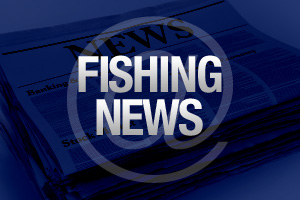The fishing tackle trade can continue to make products containing lead – after The European Parliament didn’t repeat its demand for a ban on the substance at the second reading of the Laperrouze Report.
Confronted with arguments and reports from the European Commission and the Council of Ministers, the European Parliament realised that there were no hard facts or scientific evidence as to why lead should be added to a list of ‘priority hazardous substances’.
Lead is to stay on the less restrictive list of ‘priority substances’, which means that only if water tests show a lead content above a fixed threshold, should something be done.
This would be to find the pollution source first and then put in place measures to reduce or eliminate that pollution.
“I cannot see how lead sinkers under the present threshold values could ever be the source for any lead pollution anywhere,” said EFTTA lobbyist Jan Kappel.
But the widespread use of lead, regarded as a pollutant, is likely to have to be reduced in order to achieve new water quality standards being adopted in 2015.
On June 17, the Parliament had been expected to include lead in a list of ‘priority hazardous substances’ – those which have to be completely phased out by 2018. But the European Parliament voted in favour of downgrading lead to a ‘priority substance’.
Its use has to be reduced as Member states have to progress towards compliance with the reduction or cessation objectives set by the water quality standards (EQS) by 2018.
The proposed directive on water quality is the final piece of legislation needed to support the Water Framework Directive.
EFTTA President, Pierangelo Zanetta, said: “The angling trade is well aware of the pressure to reduce the use of lead in its products – but making it a ‘priority hazardous substance’ would have caused significant problems for some companies.”
The European Parliament has decided that the use of 33 pollutants – mainly pesticides and heavy metals – likely to be found in rivers, lakes and coastal waters must be reduced or ended, depending on the level of risk involved.
The objective of the directive is to achieve good surface water chemical status. Environmental quality standards (EQS), which take the form of maximum allowable concentrations and annual average values, will be applied to the 33 pollutants.
A report drafted by Anne Laperrouze (ALDE, FR) said these substances may endanger the survival of ecosystems, and via the food chain, human health.
The EQS’s for the new ‘priority substances’ will be proposed in 2013. Adoption of these EQS is scheduled for 2015, matching the deadline of the second river basin management plans.
Another further review of the situation is scheduled for 2010 and it is expected the Parliament will try again to include lead on the list of ‘priority hazardous substances’.
Added Jan: “It is highly unlikely that new evidence will be found before 2010 to justify lead being moved to the list of ‘priority hazardous substances’.”
The full European Parliament report can be found at http://www.europarl.europa.eu/news/expert/infopress_page/064-31748-168-06-25-911-20080616IPR31747-16-06-2008-2008-false/default_en.htm






